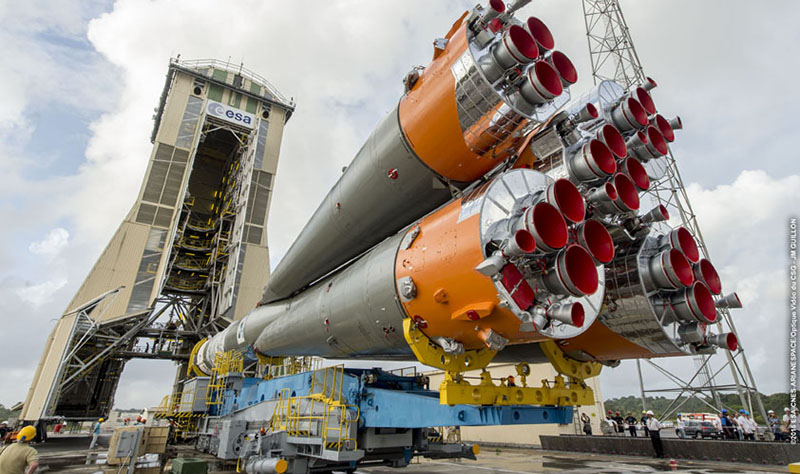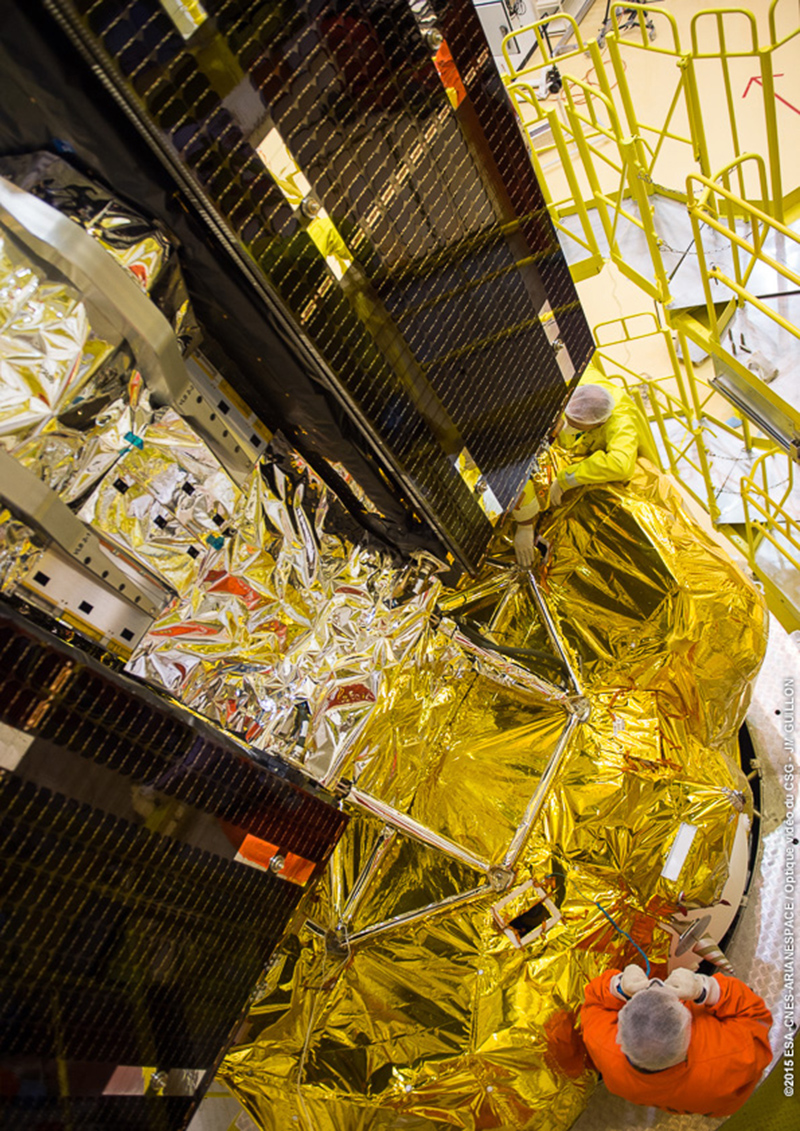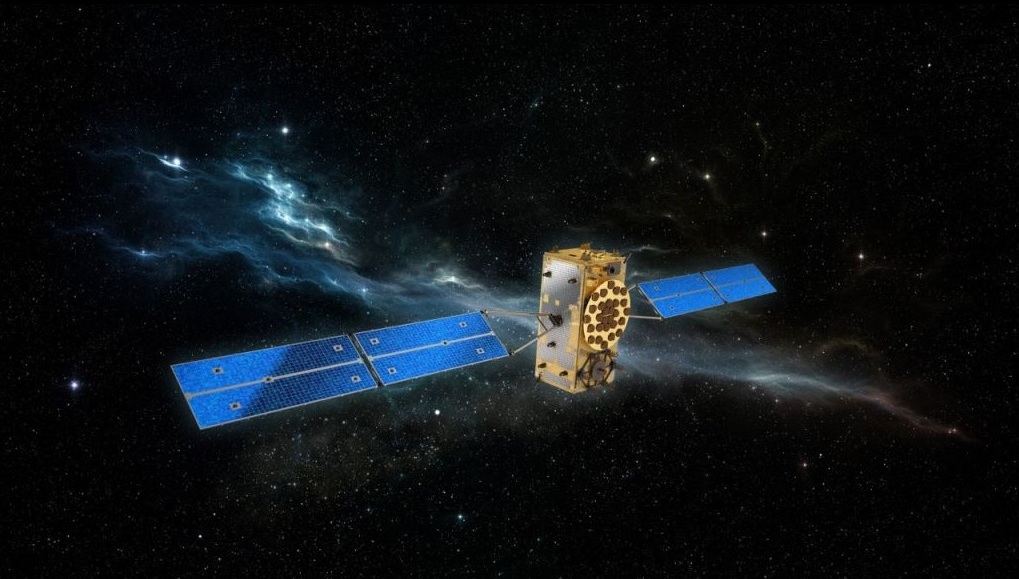
Transfer of the first three stages of Galileo’s Soyuz launcher to the pad took place on Friday, 14 December 2015. Image credit: ESA/CNES/ARIANESPACE/Optique vidéo du CSG – JM Guillon
Galileos 11 and 12 are on the launch pad, attached to the top of their Soyuz rocket in readiness for this week’s launch.
Europe’s next navigation satellites are due for launch at 11:51 GMT (12:51 CET, 08:51 local time) on Thursday from Europe’s Spaceport in French Guiana.
Last Thursday the two satellites, already attached to their carrier, were fixed to the Fregat upper stage before the halves of the protective Soyuz fairing were closed around them on Friday.
This marked the completion of the ‘upper composite’ – the combination of Galileo satellites, dispenser and the upper stage that will fly them the bulk of the way up to their medium-altitude orbit.

Galileo satellites 11 and 12 are mated with their dispenser. Image credit: ESA/CNES/ARIANESPACE/Optique vidéo du CSG – JM Guillon
Meanwhile, the first three stages of the Soyuz were assembled horizontally, rolled out to the pad and raised to the vertical.
The upper composite was moved to the pad on Sunday afternoon, hoisted to the top of the tower and then then carefully attached to Soyuz.
Yesterday’s Launch Readiness Review opened the way to Soyuz fueling and finally launch.
This latest Galileo campaign began with the arrival of the satellites in French Guiana on 30 October. This is the sixth Galileo launch overall and the third launch of 2015, set to bring the number of satellites in space up to 12.
It takes place just 11 days before the 10th anniversary of the liftoff of Europe’s very first navigation satellite.

Artist’s view of a Galileo Full Operational Capability satellite, with platforms manufactured by OHB in Bremen, Germany, and navigation payloads coming from Surrey Satellite Technology Ltd in Guildford, UK. Image credit: OHB
The experimental GIOVE-A took off on 28 December 2005 to reserve operational frequencies, test key hardware and gather data on the orbital environment for the Galileo constellation to follow. GIOVE-B followed in April 2008.
Since then not only has the first third of the Galileo constellation reached orbit, but a network of Galileo ground stations has been erected across the globe.
In future, the number of satellites that can be inserted into orbit with a single launch will double from two to four, when a customized Ariane 5 rocket becomes available to complement Soyuz.
Filed Under: Aerospace + defense




